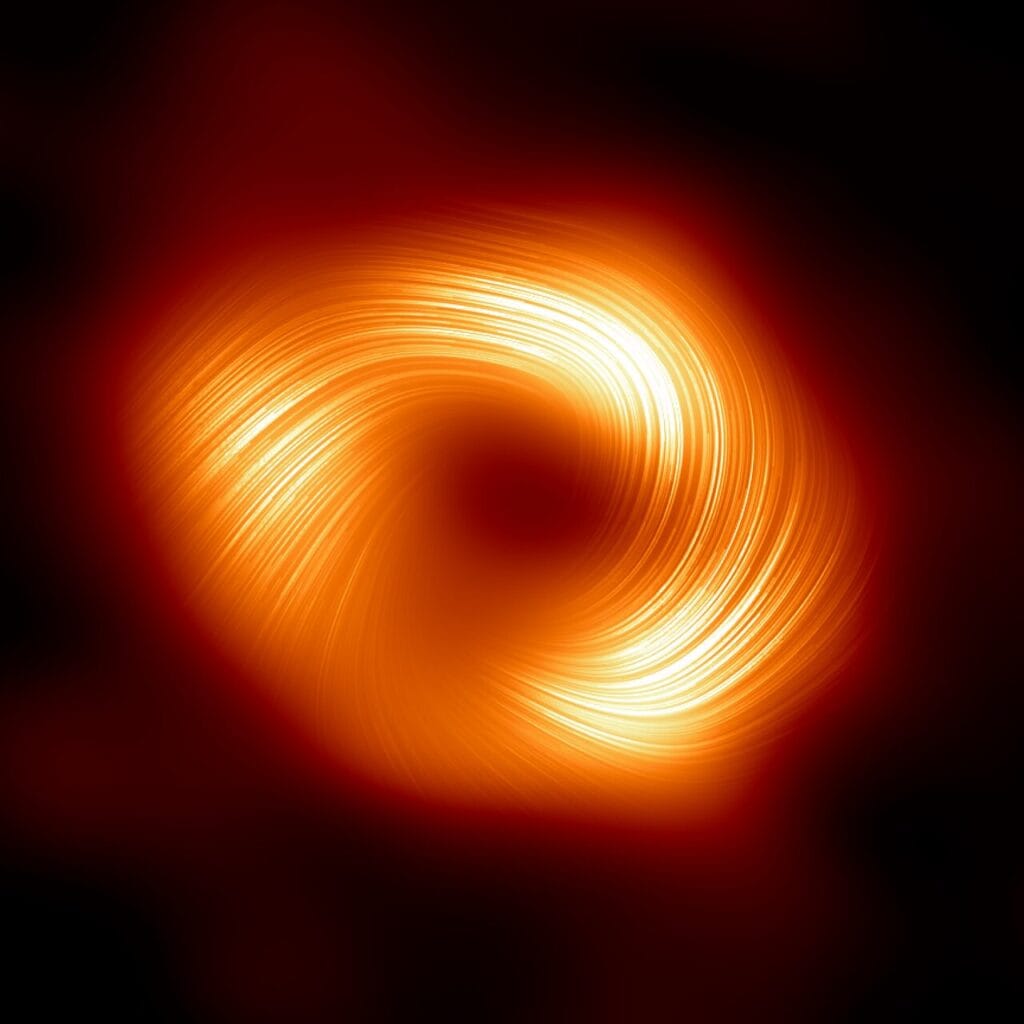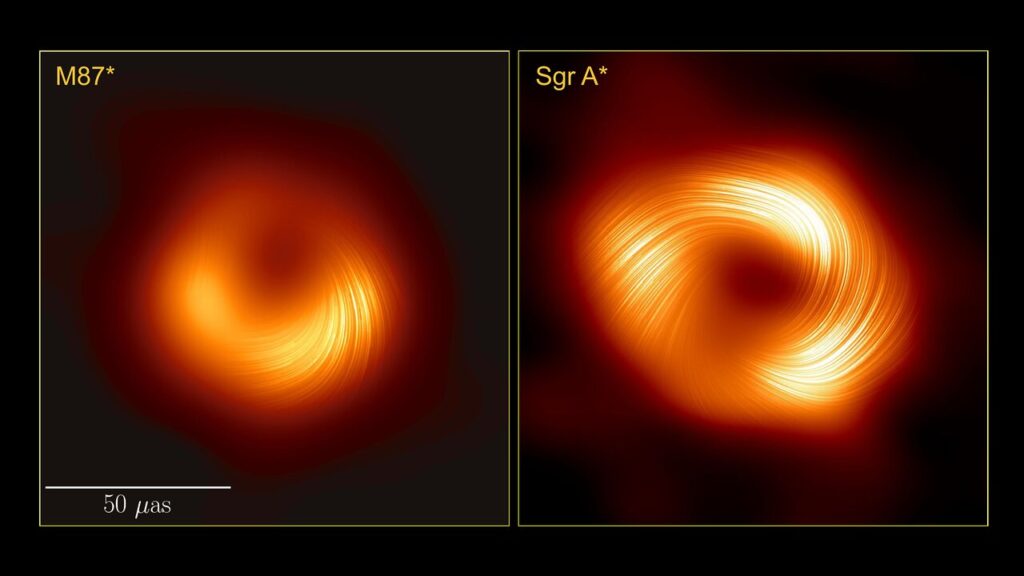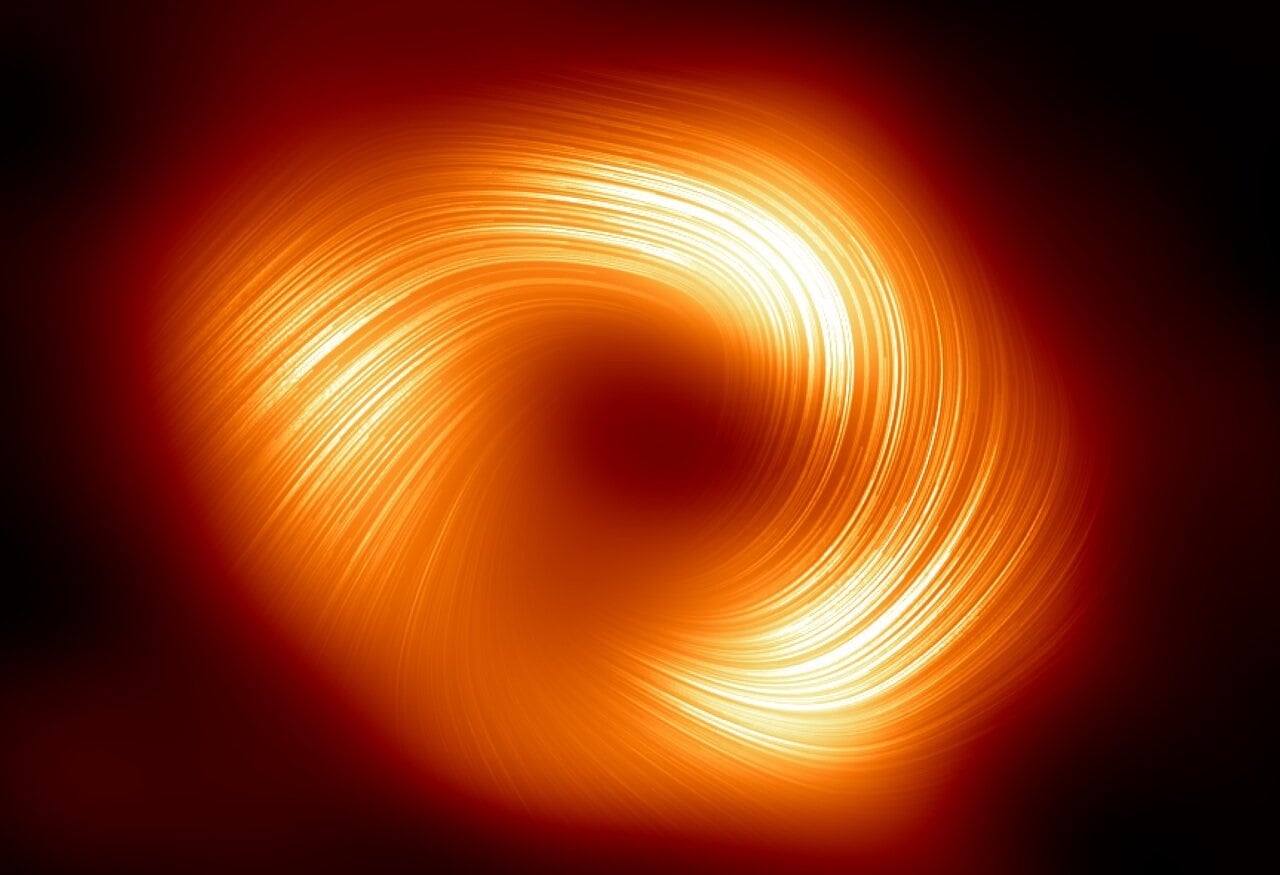The black hole at the center of our galaxy has now also been imaged with polarized light. The image reveals the magnetic field around Sagittarius A*.
A new image of Sagittarius A*, the supermassive black hole at the center of the Milky Way, reveals a rotating magnetic field around the dark imp. This suggests that the black hole may produce a previously unseen stream of high-energy material.

The image was taken using the Event Horizon Telescope (EHT). This is a global network of observatories that work together as one giant telescope.
Read also
A European-Japanese satellite will study clouds to improve climate models
Despite their apparent nature, much is still unknown about clouds and their impact on our climate. European-Japanese Earth Care Satellite…
In 2022, the EHT group revealed the first image of Sagittarius A* (or Sgr A* for short). You see on it the light that comes from the swirling hot plasma. This plasma revolves around the dark region within the black hole's event horizon, which is the place where light can no longer escape the intense gravity.
Plane or no plane?
EHT Researcher Ziri Younesi from University College London and his colleagues have now measured the polarization of this light, or the direction in which it oscillates. This shows how the magnetic field is oriented around Sgr A* and how strong this field is. The results have been published in two Articles In the scientific journal Astrophysical Journal Letters.
The magnetic field of Sagittarius A* is remarkably similar to the magnetic field of M87*, the first black hole imaged with the EHT. M87* is about 1,500 times heavier than Sgr A*. According to Yonsei, this indicates that supermassive black holes have similar structures regardless of their size.

The main difference between M87* and a black hole in our Galaxy is that there are no high-energy jets visible from Sagittarius A*. This has puzzled astronomers for a long time. The fact that Sagittarius A* has a magnetic field similar to M87* suggests that a black hole in our galaxy may also produce jets. “There could be something very exciting going on at the center of the galaxy,” Yonsei says.
Astronomers have previously found evidence that SgrA* fired jets long ago. This is partly due to Fermi bubbles: large bubbles of plasma above and below the Milky Way that emit X-rays.
Tooth Fairy
The properties of the magnetic field not only reveal a hidden plane. They can also help solve other astrophysical mysteries. For example, it is not clear how some cosmic particles are accelerated to extremely high energies. Yonsei: 'Magnetic fields underlie all of this. Anything that gives us more knowledge about how black holes and magnetic fields interact is of fundamental importance in astrophysics.
Thanks to a larger network of telescopes and more advanced equipment, Yonsei and his colleagues hope to be able to capture more images of Sagittarius A*. This would give them more knowledge about the nature of the magnetic field and how it can produce jets. The EHT team will begin making these observations this month, but it will likely take several years to process the data.
The astronomer says it is extremely rare to see the magnetic field of a supermassive black hole in such detail Christine is done From Durham University in the United Kingdom. “Magnetic fields are one of those things in astrophysics that you talk about a little bit like you're talking about the tooth fairy.”
Looking at both M87* and SgrA* in more detail may reveal differences that are not evident at current resolution, Done says.

“Thinker. Coffeeaholic. Award-winning gamer. Web trailblazer. Pop culture scholar. Beer guru. Food specialist.”








More Stories
Comet Tsuchinshan-Atlas is ready to shine this fall
Sonos isn’t bringing back its old app after all
Indiana Jones and the Great Circle is coming to PS5 in spring 2025